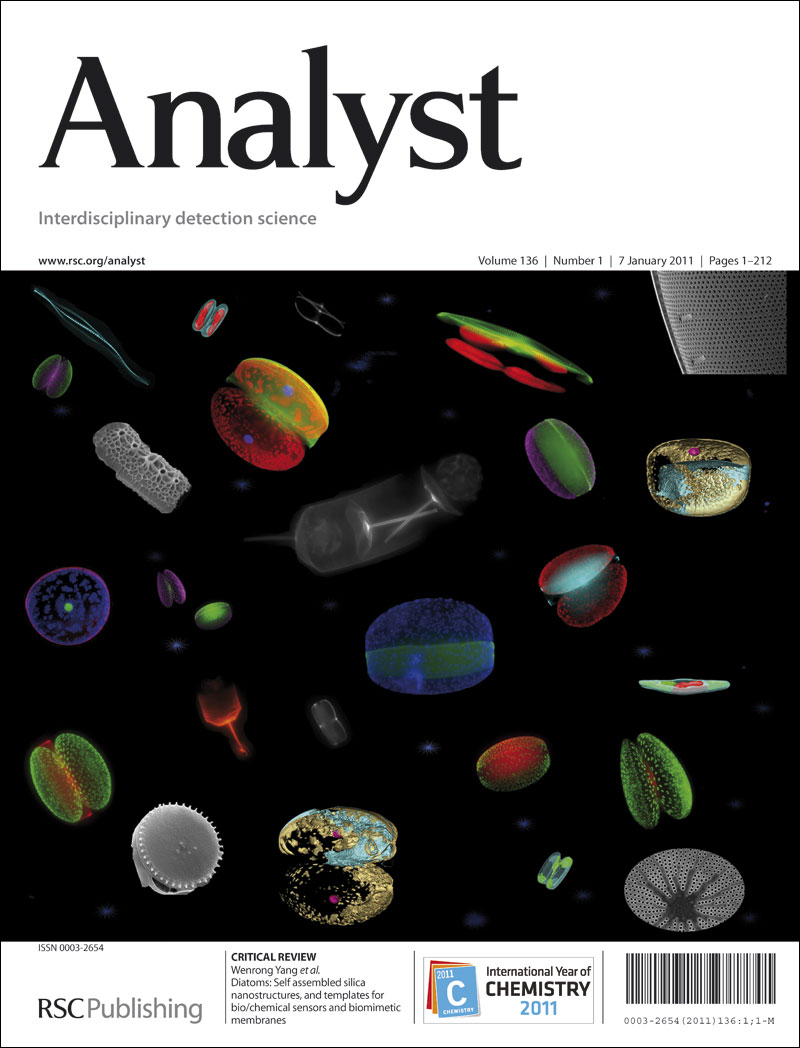便携式质子转移反应离子阱质谱仪,可选择缓冲气体。
IF 3.3
3区 化学
Q2 CHEMISTRY, ANALYTICAL
引用次数: 0
摘要
质子转移反应质谱法(PTR-MS)是一种快速、高灵敏度的挥发性有机物检测技术,在环境监测、医学诊断和食品工业等领域得到了越来越多的应用。传统的PTR-MS设备体积大、重量大,限制了其现场实时、快速分析的应用。在便携式离子阱质谱仪的基础上,研制了一种总重量为25 kg的小型化PTR-MS仪器,其特点是采用小型空心阴极放电产生氢氧离子,紧凑的离子漏斗作为漂移管。以氦气和氮气作为缓冲气体,详细研究了该仪器的质量分辨率、离子隔离和破碎效率以及灵敏度。与氮气缓冲气相比,使用氦气缓冲气时,质子化丙酮离子的质量分辨率提高了一倍,离子破碎效率提高了17倍。在氦气缓冲气体中,丙酮、苯和甲苯的检出限分别为1 ppbv、0.5 ppbv和0.1 ppbv,并在至少两个量级的浓度范围内建立了线性校准曲线。在最佳真空压力为1.5 mbar和2.5 mbar时,氦气和氮气的耗气量分别为81 mL min-1和60 mL min-1。此外,进样流量对系统的检测灵敏度和响应时间有显著影响。本文章由计算机程序翻译,如有差异,请以英文原文为准。
Portable proton transfer reaction ion trap mass spectrometer with selectable buffer gas.
Proton transfer reaction mass spectrometry (PTR-MS) is a rapid and highly sensitive technique for the detection of volatile organic compounds and has been increasingly used in the fields of environmental monitoring, medicinal diagnosis and food industry. The large size and heavy weight of conventional PTR-MS devices limit their on-site application for real-time and rapid analysis. In this work, a miniaturized PTR-MS instrument with a total weight of 25 kg was developed on the basis of a portable ion trap mass spectrometer, which was characterized by the use of a small hollow-cathode discharge for hydroxonium ion generation and a compact ion funnel as the drift tube. For this instrument, mass resolution, ion isolation and fragmentation efficiencies, and sensitivity have been investigated in detail with helium and nitrogen as buffer gases. Compared with nitrogen buffer gas, when helium buffer gas was used, the mass resolution of protonated acetone ions doubled, whereas the ion fragmentation efficiency could be increased by a factor of 17. With helium buffer gas, the limits of detection for acetone, benzene, and toluene were found to be 1 ppbv, 0.5 ppbv, and 0.1 ppbv, respectively, and linear calibration curves for these compounds were established across concentration ranges spanning at least two orders. Under the optimal vacuum pressures of 1.5 mbar and 2.5 mbar, the gas consumption rates for helium and nitrogen were 81 mL min-1 and 60 mL min-1, respectively. In addition, the sample injection flow rate exerted a pronounced influence on the detection sensitivity and response time of the system.
求助全文
通过发布文献求助,成功后即可免费获取论文全文。
去求助
来源期刊

Analyst
化学-分析化学
CiteScore
7.80
自引率
4.80%
发文量
636
审稿时长
1.9 months
期刊介绍:
"Analyst" journal is the home of premier fundamental discoveries, inventions and applications in the analytical and bioanalytical sciences.
 求助内容:
求助内容: 应助结果提醒方式:
应助结果提醒方式:


